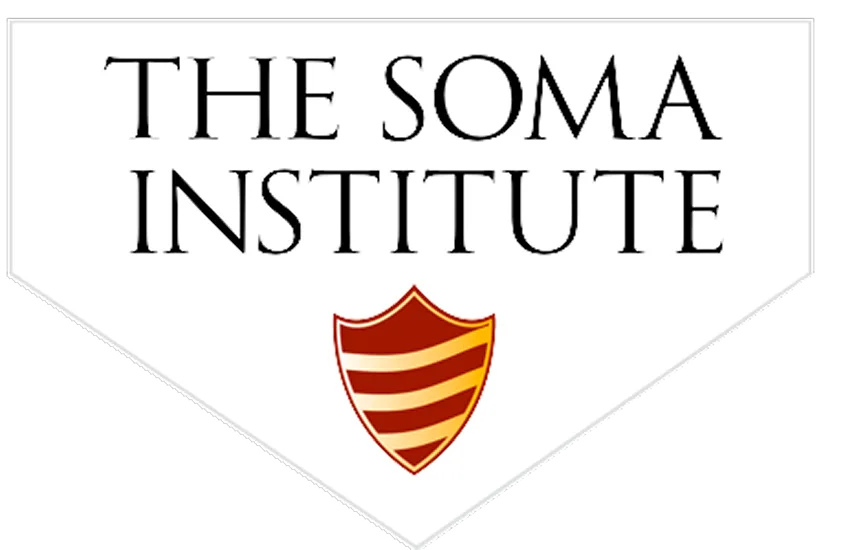By Joan Hannant, Founder & CEO of The Soma Institute

- A recent study from Baylor University found that 11.1% of U.S. adults visited a massage therapist in 2021.
- The research revealed that 6.0% of participants sought massage therapy specifically for pain management, while 8.5% used it to enhance overall health.
- Women are more likely than men to seek massage therapy, with the highest usage rates found among socioeconomically advantaged individuals and those engaged in complementary health practices.
- An impressive 92% of participants reported that massage therapy was effective in reducing pain, and 95% believed it benefits overall health and wellness.
As massage therapists and students at the Soma Institute, we’re always eager to explore how our field is growing and changing. The recent groundbreaking study from Baylor University has given us plenty to talk about. Let’s dive into what this research means for our profession and how it might shape the future of massage therapy.
A Shift in Public Perception
First things first – can we take a moment to appreciate how far massage therapy has come? The study reveals that nearly half of American adults, specifically 47%, have received a professional massage in the past year. That’s huge! It wasn’t too long ago that massage was seen as a luxury or something reserved for athletes. Now, it’s becoming a mainstream wellness practice. What does this mean for us as current or future therapists? It’s a clear sign that our skills are in demand and that the public is recognizing the value of what we do. But it also raises the bar – with more people experiencing massage, expectations for quality and effectiveness are likely to rise. Here are key insights from recent massage therapy research, highlighting the healing power of touch and its essential role in promoting overall well-being while addressing the evolving needs of clients.
The Diversity of Massage Clients
One of the most interesting aspects of the study is the breakdown of who’s getting massages. It’s not just one demographic – we’re talking about people of all ages, genders, and backgrounds. However, there are some trends worth noting. For instance, the research study found that women are more likely to seek out massage therapy than men. As practitioners, how can we make our services more appealing and accessible to everyone? Should we be thinking about tailoring our marketing or even our techniques to reach a broader audience? The age breakdown is fascinating too. Adults between 30 and 49 are the most frequent users of massage services. What is it about this age group that draws them to massage? Are we doing enough to cater to the needs of other age groups, like seniors or young adults?
Beyond Relaxation: The Many Faces of Massage Therapy
Let’s talk about why people are seeking out massage therapy. Sure, relaxation is a big draw, but pain management and overall wellness are right up there too. This diversity of motivations challenges us to be versatile in our skills and approach. As massage therapists, are we prepared to address this range of needs? It’s not just about knowing different techniques – it’s about understanding the holistic nature of wellness and how massage fits into that picture.
The Healing Power of Touch Massage in Healthcare
The research study’s findings on the effectiveness of massage therapy are incredibly encouraging. An impressive 92% of participants agreed that massage was effective in reducing pain, and 95% believed that massage can be beneficial for health and wellness. With such high satisfaction rates and perceived benefits, it’s clear that what we do makes a real difference in people’s lives. But this also raises some interesting questions. How can we better integrate massage therapy into mainstream healthcare? Should we be pushing for more collaboration with doctors and other healthcare providers? What kind of additional training or specialization might be beneficial to enhance our role in the healthcare ecosystem?
Adapting Our Education and Practice
At the Soma Institute, we’re always looking to evolve our curriculum to meet the changing needs of the field. This research gives us a lot to think about in terms of how we prepare future massage therapists. How can we better equip our students to educate clients about the health benefits of massage? Are there emerging specialties or focus areas that we should be exploring?
The Road Ahead
As we reflect on this research, it’s clear that the field of massage therapy is not just growing – it’s evolving. We’re moving beyond the old stereotypes and into a new era where massage is recognized as a valuable tool for health and wellness. For those of us already in the field or considering it as a career, this is an exciting time. But it also comes with responsibility. How can we continue to elevate our profession? How do we ensure that as massage therapy becomes more mainstream, we maintain the quality and integrity of our practice? These are the questions we should be asking ourselves as we move forward.
At the Soma Institute, we’re committed to being at the forefront of these discussions, preparing our students not just for the massage therapy field as it is today, but as it will be tomorrow. What are your thoughts on the future of massage therapy? How do you see your role evolving in this changing landscape? Let’s keep this conversation going and continue to shape the future of our profession together.
To learn more about massage therapy courses, check out The Soma Institute.
